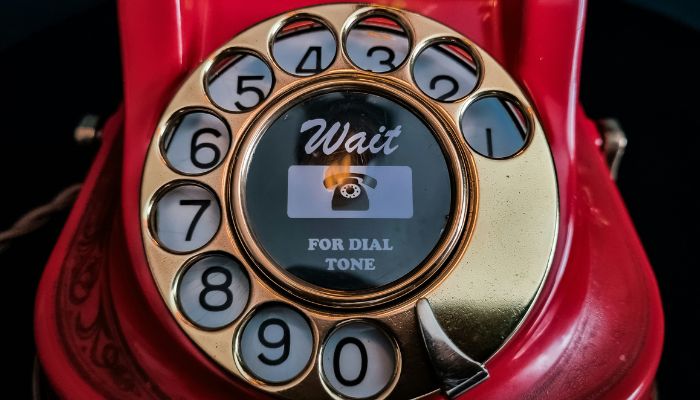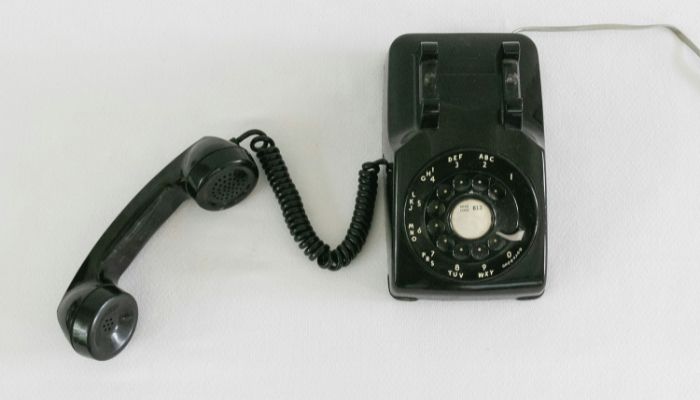
A landline number’s prefix consists of the first three digits of the seven-digit phone number that follows the area code. This 3-digit prefix identifies specific geographic areas or service providers, thereby enabling efficient call routing and accurate connections. Telecommunications authorities manage and assign these prefixes to ensure a unique and structured numbering system.
The prefix plays a vital role in organizing, allocating new numbers, and maintaining seamless communication. Understanding these prefixes enhances the efficiency of telephone networks and proper billing. For a deeper grasp on how these prefixes evolved and their full significance, further information awaits.
Understanding the Concept of Prefix
A prefix in the context of a landline number serves as an essential identifier that designates a specific geographic area or service provider. Typically, a landline number is composed of a three-digit area code followed by a seven-digit number. The first three digits of this seven-digit dialing sequence are known as the telephone prefix. These telephone prefixes are crucial for routing calls efficiently and ensuring accurate connection to the intended recipient. It is important to regularly check residential phone number details to maintain this accuracy.
The three-digit area code helps to further narrow down the location or the specific telephone service provider. For example, in a landline number such as (415) 555-1234, “415” is the area code, and “555” is the telephone prefix. Together, these components streamline the dialing process and facilitate the organization of telephone networks.
Telephone prefixes are assigned by telecommunications regulatory authorities and are meticulously managed to avoid duplication within the same area code. This system allows for a structured and reliable telecommunication network, ensuring that each landline number remains unique and identifiable.
Understanding the concept of a prefix in a landline number is fundamental for grasping how telephone systems function in both local and wider contexts.
Origin and Evolution of Prefix

The origin of telephone prefixes can be traced back to the early days of telecommunication when operators manually connected calls using switchboards. The prefix of a landline number initially served as a crucial identifier to facilitate this manual process. As telephone networks expanded, the need for a more structured system became apparent. This led to the introduction of area codes in the North American Numbering Plan (NANP) in 1947.
The original area code system was designed to divide regions into manageable segments, each assigned a unique three-digit code. As populations grew and telecommunications technology advanced, geographic splits became necessary, dividing a single area code into multiple smaller ones to accommodate the increasing demand for telephone numbers. This process ensured that each prefix of a landline number remained unique within its designated area.
However, geographic splits were not always sufficient, leading to the introduction of overlay area codes. Overlay area codes allowed multiple area codes to coexist within the same geographic region, addressing the saturation of available numbers without altering existing ones. This evolution highlights the adaptive nature of telephone networks in maintaining efficient and reliable communication systems.
Importance of Landline Number Prefix
Understanding the origin and evolution of telephone prefixes underscores their significance in modern telecommunications. The 3-digit prefix in a landline number, often referred to as the area code, plays a crucial role in the efficient functioning of the telecommunications industry. It allows telephone carriers to route calls accurately and manage the vast network of numbers effectively.
The 3-digit prefix is instrumental in identifying the geographical location of the caller. This identification is essential not just for routing the call to the correct destination, but also for billing purposes. Telephone carriers rely heavily on these prefixes to determine call rates, which can vary significantly based on the area code.
Moreover, as the telecommunications industry continues to grow, the 3-digit prefix aids in organizing and allocating new numbers. It helps avoid conflicts and ensures that each landline number is unique. This systematic approach is particularly important in densely populated regions where the demand for new numbers is high.
Decoding International Call Prefixes
Navigating the world of international calls requires a clear understanding of international call prefixes. An international call requires two primary components: the exit code and the country code. The exit code, also known as the international prefix, is a sequence of digits dialed to exit the local telephone network and connect to an international destination. Common exit codes include ’00’ in most European countries and ‘011’ in the United States and Canada.
Following the exit code is the country code, which directs the call to the specific destination country. Each country has a unique country code, such as ‘1’ for the United States and Canada, ’44’ for the United Kingdom, and ’91’ for India. It is crucial to accurately dial the phone number country code to ensure the call reaches the correct country.
For example, to call a landline in the United Kingdom from the United States, you would dial ‘011’ (exit code), followed by ’44’ (country code), and finally the local number. Understanding these prefixes allows for seamless and error-free international calls, ensuring effective global communication.
Role of Prefix in Telecommunication

Accurately dialing international call prefixes is just one aspect of the broader role prefixes play in telecommunication. Prefixes, particularly the 3-digit area code, form an essential part of the 10-digit phone number structure within many countries. This configuration is crucial as it helps to geographically segment regions, simplifying the routing process for telecommunications service providers. Therefore, regularly update landline phone number records to ensure seamless communication.
The 3-digit area code, followed by the seven-digit telephone number, ensures that each call reaches its intended destination efficiently.
In domestic networks, the prefix also plays a significant role in facilitating long-distance calls. When dialing long-distance, the caller must include the appropriate area code, effectively incorporating the prefix into the dialing sequence. This system not only streamlines the call connection process but also aids in accurately billing users for long-distance call charges.
Furthermore, prefixes help telecommunications service providers manage and allocate their resources more effectively. By organizing phone numbers into structured segments, providers can maintain robust and scalable networks capable of handling high volumes of calls. Thus, the prefix is indispensable in ensuring seamless communication within and across regions, underscoring its integral role in the telecommunication infrastructure.
Common Prefixes and Their Significance

Common prefixes in telecommunication, such as the ubiquitous 555, serve not only functional but also regulatory and symbolic roles. These 3-digit codes, often found at the beginning of a landline number, help to identify the origin or intended use of the number. They are vital for routing calls accurately and efficiently.
- 555 Prefix: Commonly used in media and advertising to prevent real phone numbers from being publicized, thus avoiding privacy issues.
- 800 Prefix: Known as toll-free numbers, these are used by businesses to allow customers to contact them without incurring charges.
- 911 Prefix: Reserved for emergency services, this prefix ensures immediate routing to local emergency response centers.
- Area Codes: These prefixes designate specific geographic regions, helping phone carriers and users identify the location of the caller.
Phone carriers utilize these prefixes to manage and allocate numbers within their networks, ensuring efficient communication. The significance extends beyond mere identification; prefixes play a crucial role in regulatory compliance and operational logistics. They also hold a symbolic value, representing the structure and organization within telecommunication systems. Understanding these prefixes provides insight into the intricate framework that supports modern telephony.
Conclusion
The prefix of a landline number serves as a crucial element in telecommunication by identifying geographic regions, facilitating international calls, and ensuring efficient routing of calls. Understanding the origins, evolution, and significance of these prefixes helps in decoding their role in the global communication network.
Common prefixes, such as country and area codes, play a vital role in the seamless functioning of telephony systems, reflecting the structured and interconnected nature of modern telecommunications.